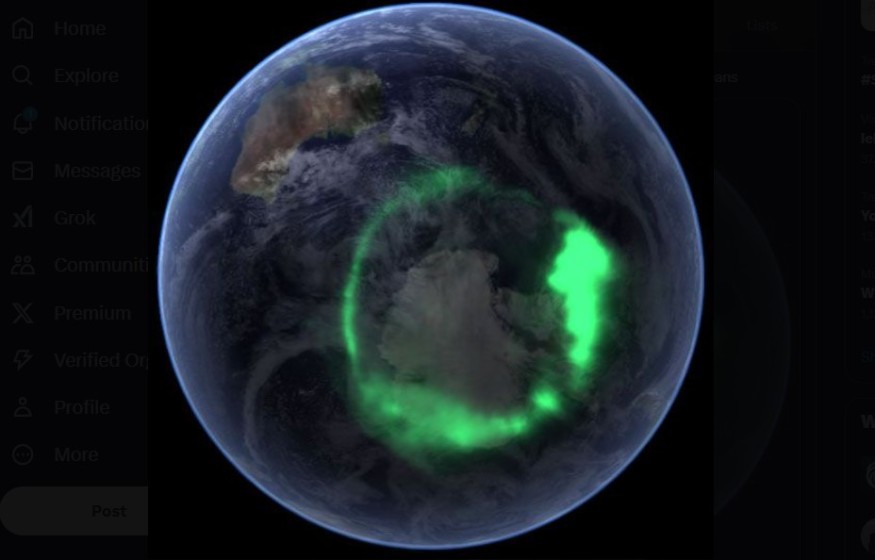
Scientists at NASA are closely monitoring an unusual and growing area of weakness in Earth's magnetic field. Known as the South Atlantic Anomaly (SAA), this phenomenon could have serious consequences for both space exploration and our planet's technology.
The SAA is essentially a "dent" in the planet's magnetic shield, stretching from southwest Africa across the South Atlantic Ocean to South America. It was first discovered in 1958 and has since become a point of concern for NASA.
Weakened Magnetic Shield Over SAA Puts Space Tech at Risk
The anomaly's weakened magnetic field exposes Earth to higher levels of solar radiation, which can cause significant issues for satellites and other space-bound technology.
Earth's magnetic field serves as a protective barrier, safeguarding us from the Sun's harmful radiation.
This magnetic shield deflects charged particles from space, preventing them from stripping away our atmosphere and making the planet uninhabitable.
However, over the SAA, this protective shield is thinner, allowing harmful particles to dip closer to the surface.
While this doesn't pose an immediate threat to life on Earth, it has significant implications for the technology we rely on, such as GPS systems, communication satellites, and weather forecasting tools.
According to Ladbible, NASA has warned that satellites passing through the South Atlantic Anomaly are vulnerable to disruptions caused by high-energy protons.
These particles can interfere with satellite systems, causing glitches or even permanent damage to onboard computers.
As a precaution, satellite operators often shut down their spacecraft's systems while passing through the SAA to avoid data loss and equipment malfunctions. This could be particularly problematic as humanity looks to expand space exploration, with missions to Mars and beyond on the horizon.
Recent observations show that the SAA is not static but is shifting and growing. Over the past few years, scientists have noticed the anomaly expanding westward and weakening in intensity. Additionally, data suggests the SAA is splitting into two separate lobes, which could further complicate satellite operations.
Scientists Track South Atlantic Anomaly to Protect Future Space Missions
Despite these concerns, the SAA provides scientists with a unique opportunity to study the Earth's magnetic field.
NASA is actively monitoring its changes to better understand the planet's core and its magnetic field's evolution, Earth.com said.
The SAA is also important because it gives clues about the early history of the Earth and its magnetic field. Studies suggest that this anomaly has been present for millions of years, and its behavior could offer insights into the long-term changes occurring deep within the Earth.
In the coming years, NASA plans to continue tracking the South Atlantic Anomaly, as understanding its movements and effects is crucial for the future of space exploration.
As we become more dependent on satellites and other space-based technologies, protecting them from the dangers posed by the SAA will be increasingly important for ensuring our safety and the success of upcoming space missions.
While the South Atlantic Anomaly doesn't threaten human life on Earth, its growing presence and potential to disrupt satellite systems underline the need for continued monitoring and research.
Scientists are keen to learn more about this peculiar region of Earth's magnetic field to predict better its future behavior and impact on both space exploration and life on the planet.
© 2025 NatureWorldNews.com All rights reserved. Do not reproduce without permission.





